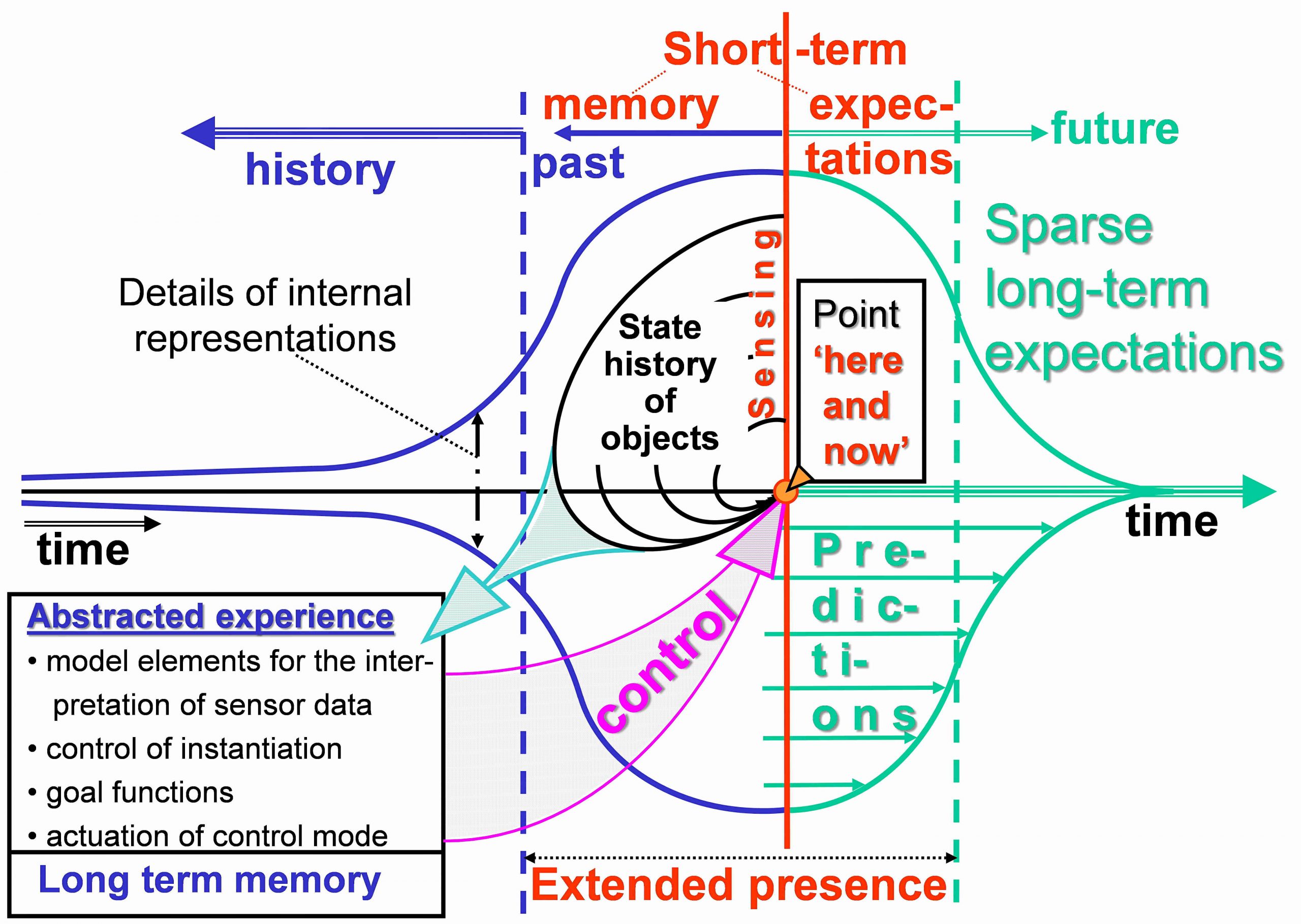The figure visualizes the dynamic vision process around the point ‘here and now’: Expectations, stored knowledge about motion processes of objects, and feedback into the perception process are key. [Dickmanns 2007, p.17]

A diverse collection of sensor data with different time delays and noise characteristics has to be interpreted in a coherent manner taking knowledge about classes of objects, their individual variations, and about own motion characteristics and maneuvers performed into account. In humans, the extended presence is in the order of a few seconds.
In vertical direction the amount of internal representations for
a) processing of sensor data exploiting background knowledge,
b) the generation and testing of object hypotheses,
c) preparing and implementing adequate actions,
d) computation of expectations, and
e) the extraction of new knowledge
is sketched qualitatively with a maximum at the actual point in time.
„Understanding“ of motion requires knowledge about typical maneuvers of other agents and knowledge of situations when the maneuvers may be used to advantage.